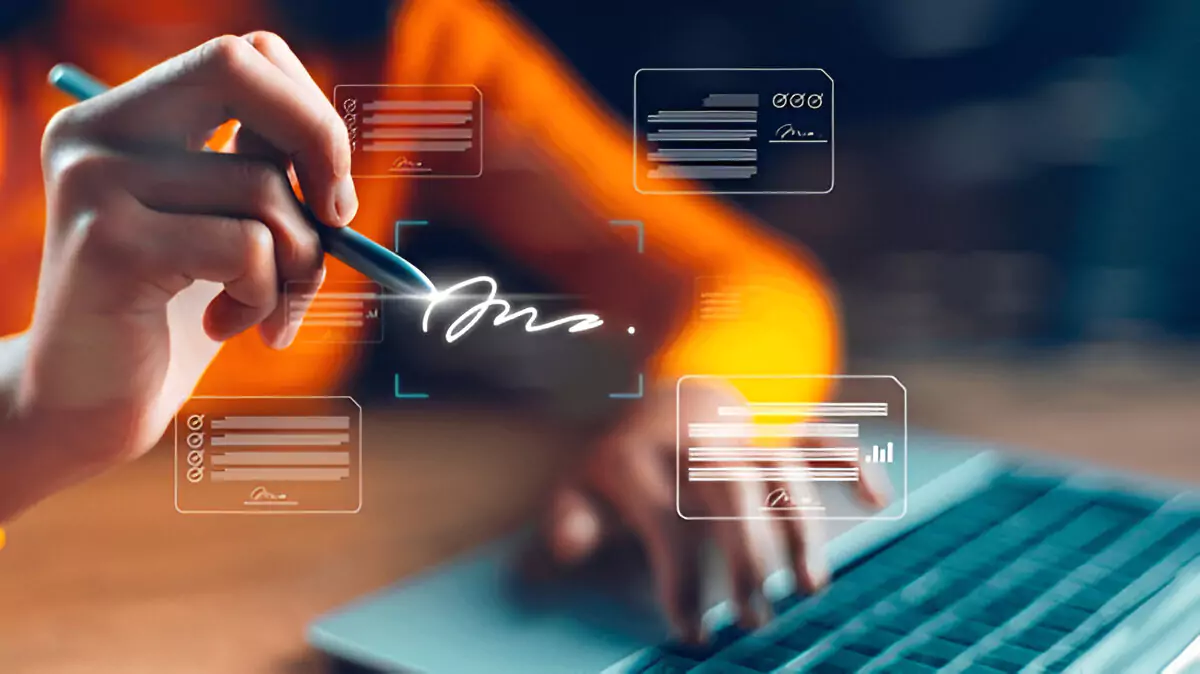Digital Signatures: Can They Be Used as Valid ID?
Digital transformation is changing the way the world does business. From submitting our taxes over the internet to signing our name digitally, we have become increasingly technology-dependent. An area where it is being rapidly adopted is the enabling of people to sign documents and authorize legal documents in digital form. But are digital signatures valid IDs, and how do they compare with, say, handwritten signatures or physical IDs?
This article is a guide to what you need to know about digital signatures, their validity as forms of identification, and the part they play in transactions.
What Are Digital Signatures?
Digital signature is a secure cryptographic mechanism to validate the signer, i.e., to confirm the signer’s identity and also to verify his / her digital information/signature, which further validates that the data he/she is signing is not corrupted. It is used most commonly to verify and authenticate electronic documents and can mean the end of paper-based methods of certification.
In contrast to scanned signatures, a digital signature is created using encryption technology and uniquely accompanies the signer. That’s extra security to ensure that they are legal and legitimate in many regions of the world.
How Digital Signatures Really Work
Digital signatures are based on Public Key Infrastructure (PKI), that have a pair of keys:
i) Private key
ii) Public key
- Private Key: It is used to generate the digital fingerprint and is kept by the signer.
- Public Key: This is used to check if the signature is valid and genuine.
When the user signs a document, the private key encrypts a signature. The recipient then uses the public key to decrypt it and verify the document hasn’t changed since it was signed.
It is promising and much attention has been given, due to the security integrity and abundant non-repudiation of identification, which are widely required in traditional identification.
Digital Signatures vs Electronic Signatures
The words Digital Signature and Electronic Signature are frequently used as synonyms, but this is incorrect.
- E-Signature: A generic term referring to any process (including clicking a checkbox) invoked or adopted by an individual with the intent to sign a record, including online or computer-based gestures, actions, or requirements for signature.
- Digital Signature (DS): Arranged by using encryption to ensure the authenticity and integrity of the signature, and is a type of e-signature.
All digital signatures are electronic signatures but not all electronic signatures adhere to the legal requirements for digital signatures.
Can You Use Digital Signatures as Identification?
The acceptability of digital signatures as a form of identification is determined by their compliance with relevant regulations and/or laws. Here’s a breakdown by region:
United States
- In the United States, electronic signatures are legally valid under the ESIGN (Electronic Signatures in Global and National Commerce) Act and UETA (Uniform Electronic Transactions Act).
- These laws accord digital signatures the equivalent legal status as handwritten ones, given that the requirements since then have been met, namely approval to operate electronic signatures and adherence to security protocols.
- But when it comes to standing in for a physical ID, such as a passport or driver’s license, digital signatures simply aren’t as widely recognized unless coupled with additional verification.
European Union
- The use of electronic signatures is regulated by the eIDAS Regulation (EU No 910/2014) in all EU member states.
- Under this framework, enhanced electronic signatures (more particularly qualified electronic signatures) are legally equivalent to written signatures.
- These signatures are also subjected to strict security requirements for their validation.
Other Regions
- Digital signatures are also recognized by a variety of regional laws, such as the IT Act (India) and the Electronic Transactions Act (Australia), as well as other countries that include Singapore.
- Even so, the extent to which they’re accepted as valid IDs can vary, depending on the scenario, like banking, government processes or signing contracts.
Limitations
Digital signatures work wonders for document authentication, but there’s no way they will completely replace a valid ID such as a passport or driver’s license when traveling through the sky or the hands of the government without being tied down by biometric authentication.
Upsides of Digital Signatures
- Efficiency: They remove the requirement of a physical signature and presence for identity, drastically speeding up transactions.
- Enhanced Security: Digital signatures are (thanks to encryption techniques) also harder to fake or tamper with than physical signatures.
- Global Validity: They are now being taken more seriously internationally, thanks to international legislation such as eIDAS and ESIGN Act.
- Sustainability: Digital signatures also promote green business practices by cutting down on paper use.
- Remote Accessibility: Whether you’re signing a contract or checking someone’s authenticity, digital signatures make the action secure and location-independent.
Drawbacks of Digital Signatures
However, they face some problems as well:
- Compliance: As time has gone by, digital signatures are required to comply with all sorts of regulations depending on the “locale”.
- Cost of Implementation: PKI is expensive to set up, as is third-party signing software.
- Not a Universal ID: Even though it is legal to use a digital signature to sign a contract, it does not have the same widespread use as a primary ID used worldwide.
Applications of Digital Signature
- Business Contracts: That makes it easier to sign contracts, whether that be for a job, or as part of a merger or acquisition.
- Healthcare: Prescriptions, patient documents, and laboratory results are commonly signed with digital signatures.
- Financial Transactions: A lot of banks use digital signatures for their loan applications, opening accounts, or other financial applications.
- Government Services: Governments around the globe use digital signatures for e-filing taxes, online voting, and electronic IDs.
- Education: Digital signatures are used by colleges to validate diplomas and student transcripts.
Real-World Examples
- DocuSign and SignNow are well-known systems that are compliant with a lot of regulations and standards for digital signatures around the world.
- Adhaar eKYC (India) combines digital signature with biometric verification, with an example how state-of-the-art signature technologies can live with traditional ID.
- In today’s digital age, companies like Adobe Acrobat Sign feature strong digital signature solutions that operate in any legal apparatus on earth.
The Future of eSignatures
In light of increasing attention to ease of use and security, digital signatures are anticipated to go beyond simple document verification and become embedded in complete identity validation architectures. Novel technologies, including blockchain and biometrics, are expected to help increase their acceptance as IDs.
Final Thoughts
Digital signatures have evolved a lot in revolutionizing the way we identify people and sign documents. However far they are from entirely supplanting traditional acceptable ID forms such as passports or governmental licenses, they are becoming an essential tool for modern businesses and institutions of all kinds, looking both to optimize efficiency and maximize security.
Whether you are doing business or performing a personal transaction, digital signatures guarantee complete reliability and convenience. Looking to see how you can save time with digital signatures? Begin seamlessly integrating secure digital and electronic signatures right away – you’ll instantly notice the difference with DocuSign and Adobe Acrobat Sign, both trusted solutions!



